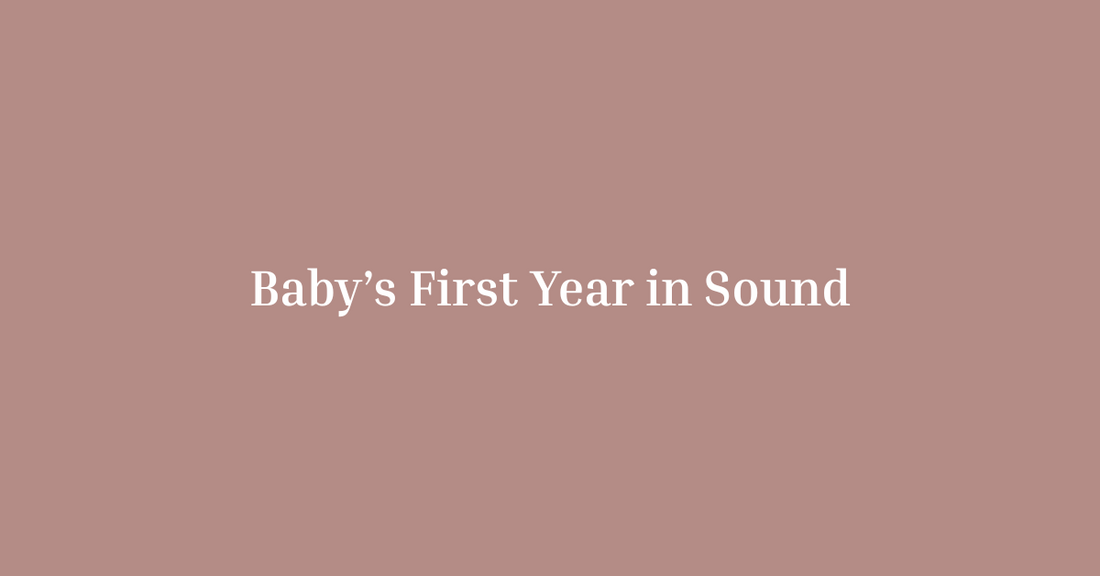
Your Baby’s First Year in Sounds: How Auditory Cues Shape Sleep, Emotion and Memory
Share
Long before your baby says their first word, they are listening. Not just passively—but deeply, instinctively, and constantly. From the heartbeat in the womb to the whisper of white noise during naps, sound shapes their world.
In your baby’s first year, sound doesn’t just soothe—it builds neural pathways, influences emotional development, and lays the groundwork for language and memory. So yes, that gentle shushing you’ve been doing? It matters more than you think.
The Science of Early Sound Recognition
By the third trimester, babies can hear—and prefer—their mother’s voice. After birth, they instinctively recognise tones, rhythms, and familiar sounds, even over new visuals.
A study published in PNAS (Proceedings of the National Academy of Sciences) found that newborns recognise and respond to the rhythm and melody of language heard in utero—especially their native tongue.
This early auditory exposure becomes a comforting constant as your baby navigates the vast sensory landscape of their first year.
The Sounds That Shape Your Baby’s Brain
1. Womb-Like Noise (0–3 Months)
White, brown, or pink noise mimics the whoosh of blood flow in the womb—a constant, low-frequency sound that helps newborns feel safe and soothed.
- Ideal for: reducing startle reflex, masking environmental noise, calming fussy babies
- Best delivered via a consistent cue like Shushiie, which travels well from cot to car
2. Rhythmic Speech and Singing (3–6 Months)
Your baby may not understand words yet, but they recognise intonation, repetition, and melody. This supports emotional bonding and language development.
- Sing the same lullaby at bedtime
- Speak in a soothing tone, even during diaper changes
According to Harvard’s Center on the Developing Child, “serve and return” interactions—including speech and singing—are crucial for early brain development.
3. Familiar Sound Cues (6–12 Months)
Routine sounds—like the snap of a light switch, the creak of a rocking chair, or a particular song—start to form associative memory. This is the basis of habit formation and emotional security.
- Turn on the same sound cue before every nap or bedtime
- Avoid switching between multiple noise sources—babies crave predictability
How Sound Impacts Emotion and Memory
Sound is processed in the limbic system, the same part of the brain that governs emotion. That’s why a baby can burst into tears when they hear the vacuum… or melt into calm when they hear the opening bars of a lullaby they’ve heard since birth.
As they grow, these auditory memories form part of their emotional blueprint—what feels safe, what feels soothing, what feels familiar.
A 2020 paper in Developmental Psychobiology linked consistent sensory cues—particularly sound—to improved emotional regulation in infants by 12 months.
Creating a Sound-Responsive Environment
✅ Use sound intentionally—not as background clutter
✅ Keep cues consistent across sleep and transition periods
✅ Opt for low-frequency sounds (brown noise, soft rain, shushing)
✅ Avoid overstimulation—no blinking lights or unpredictable sounds before bed
✅ Choose tools that grow with your child—Shushiie’s layered sound options evolve with your baby’s preferences and developmental stage
Final Thought: Every Sound Tells a Story
Your baby’s first year is not just a visual journey—it’s an auditory one. Every sigh, song, and shush is a building block. When used intentionally, sound becomes more than noise—it becomes comfort, connection, and calm.
